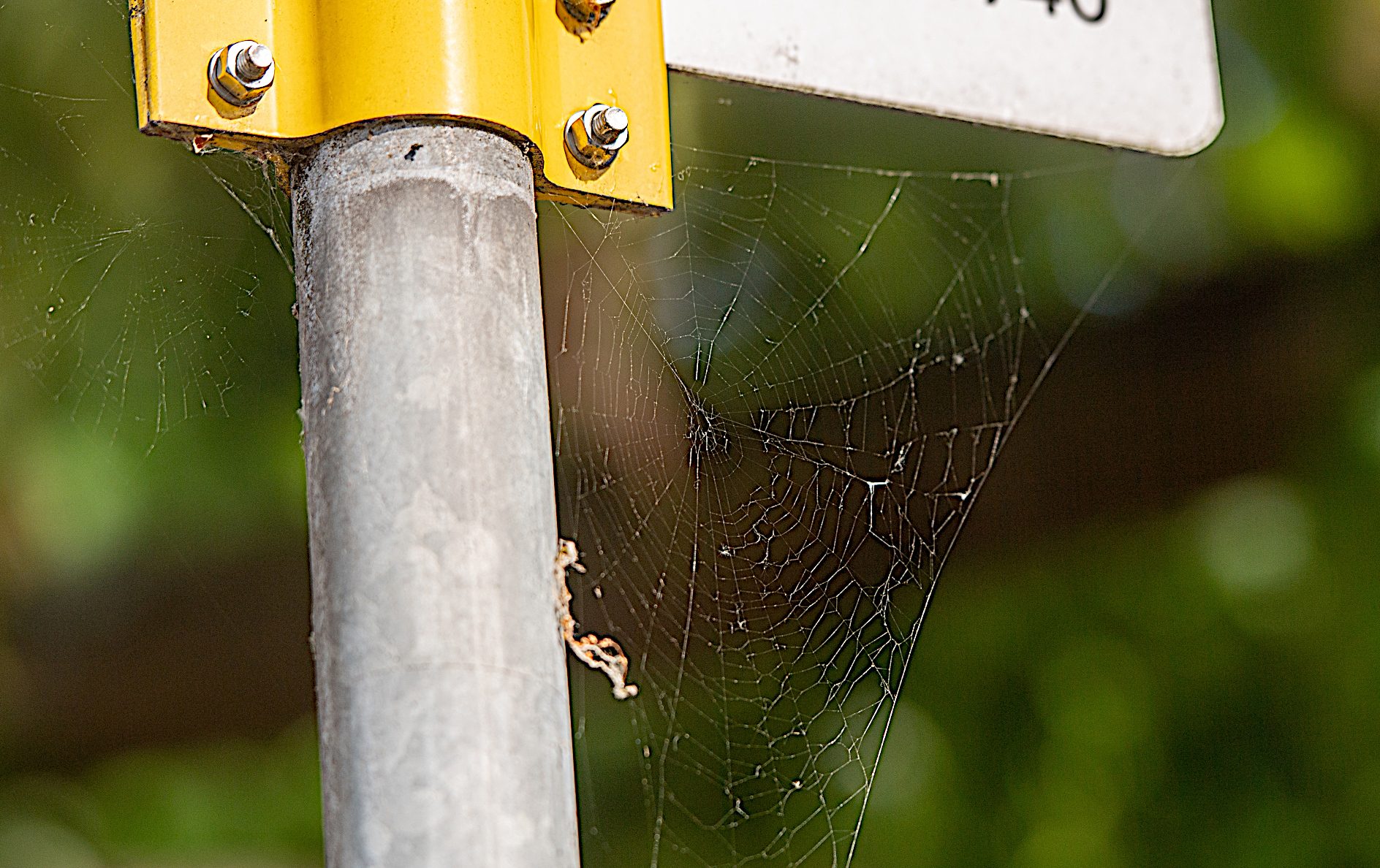In addition to flies and the like, the notoriously suspended substance in the air also gets stuck in sticky threads: researchers report that studies of spider webs allow conclusions to be drawn about city air pollution with small plastic particles and tire wear. The results show that the quantities found reflect the conditions at the site in question. According to the scientists, spider web analyzes therefore have interesting potential as a detection method: particulate pollution in the air can be recorded in a simple and inexpensive way and particularly affected areas can be identified.
Small plastic particles are not only found in bodies of water and soil – studies in recent years have shown that they can also float in the air in large quantities. These traces of human civilization are found on the remote icy surfaces of mountainous and polar regions. So-called microplastics come from various sources. These are, for example, decomposing products from shopping bags and the like or fiber fragments from textiles. In addition, small rubber pollutes the environment, which mainly comes from tire wear in vehicles. Studies show that intractable substances can accumulate in living organisms including humans. The results of this are currently the subject of research.
Eight research assistants
The basic question is where and how many different particles circulate in the air. To find out, researchers typically install collection systems at each study site. However, such collectors may be provided there by “eight-legged personnel,” scientists working with Barbara Schulz-Bucher of Karl von Ossetsky University in Oldenburg believe: They came up with the idea of exploring how far spider webs can be used to detect On pollution of suitable plastic particles in the air. “Spiders are found all over the world – including in cities. Their sticky webs are perfect traps for anything swirling in the air. But until now, no one has checked spider webs for microplastics,” says Schultz-Bucher.
For their study, the researchers collected spider webs from the overhead area of semi-covered bus stops. These sampling sites were located along roads with varying levels of traffic in the urban area of Oldenburg. The samples were then processed in the laboratory, with the particles adhered to the grids focused on the filters. The team first examined these using microscopic analyses. Particles that had apparently settled on the sticky threads from the air were already visible. The researchers then heated the samples and separated the material made up of the particles using a gas chromatograph. The final mass spectrometer then made it possible to allocate and identify the various sources.
Particulate pollution is reflected in the net
The results of the analysis showed that: “All spider webs were contaminated with microplastic particles,” reported co-author Isabel Gussmann of the University of Oldenburg. Scientists report that in some cases, the plastic content makes up a good tenth of the net’s total weight. Specifically, they were able to identify PET (polyethylene terephthalate) plastic, which presumably comes from textiles. It also turned out that apparently small particles of PVC (polyvinyl chloride) were buzzing in the air at bus stops. This is a common material used in many plastic parts.
The air pollution caused by the wear of tires was also clearly shown. As the scientists point out, the results showed that suspended particles accumulate in spider webs very quickly. The volume of traffic at the sampling points was reflected in the specified volumes. “Our results also indicate that wear from road markings is another important source of microplastic pollution along roads,” says Schulze-Bucher.
According to the researchers, the results of their study demonstrate the potential of the spiderweb method for environmental monitoring: the method offers a simple and inexpensive alternative to complex measurements for a relative assessment of the microplastic content of the direct ambient air. According to the scientists, this may be important in the context of further toxicological investigations.
Source: Karl von Ossetsky University of Oldenburg, specialized article: Macro Ecology, doi: 10.1016/j.scitotenv.2022.55008

“Alcohol buff. Troublemaker. Introvert. Student. Social media lover. Web ninja. Bacon fan. Reader.”






More Stories
Ability to innovate: Research has not lost any of its innovative power
Hypertension, Diabetes & Co: Four Types of Sleep That Often Make You Sick – The World of Sleep
The Academy of Sciences has 34 new members